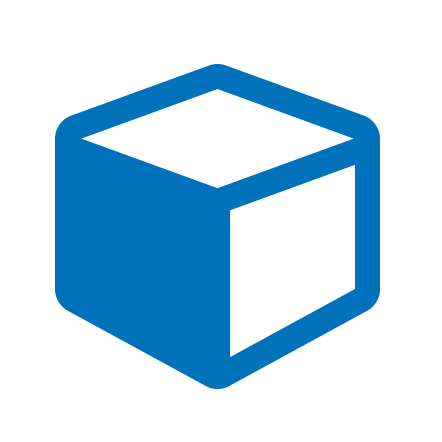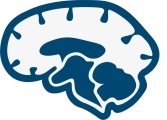Search Constraints
Number of results to display per page
Search Results
-
- Description:
- This dataset consists of web annotation data that originates from the CRC 1475 "Metaphors of Religion" ( https://w3id.org/MoRe-SFB1475/) in a collaborative effort by researchers from Ruhr University Bochum (RUB) and Karlsruhe Institute of Technology (KIT). It includes metaphor analyses that have been created by scholars from the subproject A01 "Path and Guidance: Interpretations of Qur’anic Metaphors of Space and Movement in the Tafsīr Literature" during the CRC's first funding period from 2022 to late 2025. and The included files are plain text files and contain RDF data in N-Quad syntax (RDF 1.1 N-Quads, see https://www.w3.org/TR/n-quads/).
- Keyword:
- RDF, metaphors, linked data, religion, Tafsir, web annotations, and N-Quads
- Publisher:
- Date Uploaded:
- 2025-10-24
- Date Modified:
- 2025-10-30
- License:
- Creative Commons BY Attribution 4.0 International
- Resource Type:
- Dataset
-
- Description:
- This dataset consists of web annotation data that originates from the CRC 1475 "Metaphors of Religion" ( https://w3id.org/MoRe-SFB1475/) in a collaborative effort by researchers from Ruhr University Bochum (RUB) and Karlsruhe Institute of Technology (KIT). It includes metaphor analyses that have been created by scholars from the CRC's various research projects during its first funding period from 2022 to late 2025., The included files are plain text files and contain RDF data in N-Quad syntax (RDF 1.1 N-Quads, see https://www.w3.org/TR/n-quads/)., and Please cite this data publication as: CRC 1475 Metaphors of Religion. 2025. Metaphor analysis web annotation data from CRC 1475 'Metaphors of Religion' version 1.0. ReSeeD Research Data Repository, Research Data Services (RDS) of the Ruhr University Bochum. https://doi.org/10.60517/tt44pq55t
- Keyword:
- linked data, metaphors, RDF, web annotations, religion, and N-Quads
- Publisher:
- Date Uploaded:
- 2025-10-23
- Date Modified:
- 2025-10-30
- License:
- Creative Commons BY Attribution 4.0 International
- Resource Type:
- Dataset
-
Web Annotation Data of the CRC 1475 'Metaphors of Religion'
User Collection
- Description:
- The datasets in this collection contain web annotation data which originate from the [CRC 1475 "Metaphors of Religion"]( https://sfb1475.ruhr-uni-bochum.de/en), a collaborative effort by researchers from Ruhr University Bochum (RUB) and Karlsruhe Institute of Technology (KIT). They include metaphor analyses that have been created by scholars from the CRC's various research projects during its first funding period from 2022 to late 2025.
- Resource Type:
- Dataset
0Collections12Works -
- Description:
- This dataset is part of a Distributed Fiber Optic Strain Sensing (DFOS) study along a dark fiber for monitoring purposes conducted on an optical fiber link between Boxmeer and Deurne in the Netherlands. The work investigates the application of DFOS using existing dark fiber infrastructure from telecommunication companies to capture strain variations along tens of kilometers with high spatial and temporal resolution. The experiment covered the time period from 2025-06-25 08:19:32 UTC to 2025-08-11 11:56:03 UTC. This data set contains the recordings covering the arrival of seismic waves from the 2025 M8.8 Kamchatka earthquake between 2025-07-29 23:30:01 UTC to 2025-07-30 01:15:46 UTC. Recordings with the QuantX-system contain the following settings: gauge length of 20 m, channel spacing of 2 m, and a sampling rate of 250 Hz. The dark fiber has a length of nearly 36 km, leading to a total of 18,100 channels in each file. File naming follows the start timestamp in BTS. The 26 geo-referenced channel locations from tap tests and/or locatable noise sources are contained in this data set as well.
- Keyword:
- Distributed Fiber Optic Sensing (DFOS), Seismic Monitoring, Kamchatka, Earthquake, Ground Motion, Netherlands, Distributed Acoustic Sensing (DAS), and Distributed Dynamic Strain Sensing (DDSS)
- Subject:
- Earthquake and Seismology
- Publisher:
- Language:
- English
- Date Uploaded:
- 2025-09-12
- Date Modified:
- 2025-09-29
- License:
- Creative Commons CC0 1.0 Universal
- Resource Type:
- Dataset
-
- Description:
- Recent experiments on twisted double bilayer tungsten diselenide have demonstrated that moir\'e semiconductors can be used to realize a relativistic Mott transition, i.e., a quantum phase transition from a Dirac semimetal to a correlated insulating state, by twist-angle tuning. In addition, signatures of van Hove singularities were observed in the material's moir\'e valence bands, suggesting further potential for the emergence of strongly-correlated states in this moir\'e semiconductor. , Based on a Bistritzer-MacDonald-type continuum model, we provide a detailed analysis of the twist-angle dependence of the system's moir\'e valence band structure, focussing on both, the evolution of the Dirac excitations and the Fermi-surface structure with its Lifshitz transitions across the van Hove fillings. We exhibit that the twist angle can be used to band engineer a high-order van Hove singularity with power-law exponent~$-1/4$ in the density of states, which can be accessed by gate tuning of the hole filling., We then study the magnetic phase diagram of an effective Hubbard model for twisted double bilayer tungsten diselenide on the effective moir\'e honeycomb superlattice with tight-binding parameters fitted to the two topmost bands of the continuum model. To that end, we employ a self-consistent Hartree-Fock mean-field approach in real space. Fixing the angle-dependent Hubbard interaction based on the experimental findings, we explore a broad parameter range of twist angle, filling, and temperature., We find a rich variety of magnetic states that we expect to be accessible in future experiments by twist or gate tuning, including, e.g., a non-coplanar spin-density wave with non-zero spin chirality and a half-metallic uniaxial spin-density wave., In this dataset, we provide the angle-dependent parameters of the effective honeycomb-lattice Hubbard model for twisted double bilayer tungsten diselenide in ABBA stacking order., Based on a Bistritzer-MacDonald-type continuum model, we have calculated an effective honeycomb-lattice Hubbard model with tight-binding parameters fitted to the two topmost bands. The model parameters are twist-angle dependent and we provide data for all angles between 1.00 degree and 4.18 degrees in steps of 0.02 degrees. We include n-th-nearest neighbor hopping amplitudes, 'tn', up to the 10th nearest neighbor, i.e., t1,..., t10, and an additional energy offset 'E0' to match the band energies of the continuum model. We also give our estimate for the angle-dependent on-site Hubbard interaction 'U'. All quantities are given in units of meV., and For a chosen twist angle the parameters provided in our data file uniquely define an effective honeycomb-lattice Hubbard model that describes the two topmost Gamma-valley moir\'e valence bands of twisted double bilayer tungsten diselende in ABBA stacking order. The model is then a starting point for quantum-many-body calculations. In the accompanying publication to this data set, we use the model to calculate the magnetic phase diagram employing an unrestricted Hartree-Fock mean-field approach in real space.
- Keyword:
- Moiré materials, Twisted double bilayer tungsten diselenide, Relativistic Mott transition, 2D materials, Magnetic phase diagram, Band-structure calculations, Honeycomb-lattice Hubbard model, Van Hove Singularity, Hartree-Fock mean-field, Strongly-correlated electron systems, and Dirac materials
- Publisher:
- Date Uploaded:
- 2025-08-28
- Date Modified:
- 2025-09-15
- License:
- Creative Commons BY-NC-SA Attribution-NonCommercial-ShareAlike 4.0 International
- Resource Type:
- Dataset
-
InnerMap - Software
User Collection
- Description:
- Software created within the ERC project "InnerMap"
- Resource Type:
- Software
1Collections0Works -
- Description:
- Version 1.0 of the Unity Experiment Toolbox (UNEXT) designed to support the creation of monitor- or VR-based cognitive and spatial experiments in the Unity game engine. , Optimized for Unity version 6. , and See the manual for the description of the toolbox variants, the installation process, main functions and demo scenes.
- Keyword:
- Experiment Design, Unity, and Game Engine
- Publisher:
- Date Uploaded:
- 2025-07-22
- Date Modified:
- 2025-08-14
- License:
- MIT License
- Resource Type:
- Software
-
- Description:
- Problematic media use in children and adolescents has been linked to various mental health concerns. Given the increasing prevalence of media use among German children, it is crucial to have a valid tool to assess problematic media use. The present study validated the 9-item short form of the problematic media use measure (Domoff et al., 2019) in a German sample of N = 240 parents of 4-16-year-old children and explored its relationship with child and parental mental health. Parents completed questionnaires on their child’s problematic media use, psychosocial functioning, their own mental health and media use online. The German version of the PMUM-SF demonstrated high internal consistency, and good convergent and incremental validity. Problematic media use was significantly associated with age and with child functioning such as externalizing and internalizing problems. Furthermore, parental media use and parental stress and depression were positively correlated with child problematic media use. The study thus supports the use of the German version of the PMUM-SF as a measure of problematic media use in children ages 4 through 16 years old.
- Keyword:
- problematic media use, parental mediation of media, externalizing and internalizing behavior, media addiction, mental health, and media rules
- Publisher:
- Date Uploaded:
- 2025-07-04
- Date Modified:
- 2025-07-11
- License:
- Creative Commons BY-NC-ND Attribution-NonCommercial-NoDerivs 4.0 International
- Resource Type:
- Dataset
-
- Description:
- The content of this dataset (videos, subtitle files, and cover image files) derives from the research project "Intervention against the stigmatization of men with eating disorders in primary care (iSMEsH)" funded by the German Federal Ministry of Health (BMG). The aim of the project “Intervention against the stigmatization of men with eating disorders in primary care (iSMEsH)” was to develop and scientifically evaluate the online training course “Eating disorders in boys and men” for doctors. The intervention was developed to sensitize general practitioners to the topic of eating disorders in boys and men and to impart knowledge and skills. In addition to examining the effectiveness of the training in terms of reducing stigma among GPs, iSMEsH was also investigating the practical applicability of the intervention, including its acceptance, feasibility, willingness to adopt, and sustainability. The video training comprises the following 6 modules: - Facts on Eating Disorders (duration: 11:34) - Symptoms and Diagnostics (duration: 11:22) - Communication Strategies (duration: 10:06) - Muscle Dysmorphia (duration: 5:21) - Support and Assistance Services (duration: 8:03) - Caretakers (duration: 6:09) and Die Inhalte dieses Datensatzes (Videos, Untertiteldateien und Coverbilddateien) stammen aus dem vom Bundesministerium für Gesundheit (BMG) geförderten Forschungsprojekt „Intervention gegen die Stigmatisierung von Männern mit Essstörungen in der Primärversorgung (iSMEsH)“. Ziel des Projekts „Intervention gegen die Stigmatisierung von Männern mit Essstörungen in der Primärversorgung (iSMEsH)“ war die Entwicklung und wissenschaftliche Evaluation des Online-Trainings „Essstörungen bei Jungen und Männern“ für Ärzte. Die Intervention wurde entwickelt, um Allgemeinmediziner für das Thema Essstörungen bei Jungen und Männern zu sensibilisieren und ihnen Wissen und Fertigkeiten zu vermitteln. Neben der Untersuchung der Wirksamkeit der Schulung im Hinblick auf die Reduktion der Stigmatisierung bei Hausärzten untersuchte iSMEsH auch die praktische Anwendbarkeit der Intervention, einschließlich ihrer Akzeptanz, Machbarkeit, Bereitschaft zur Übernahme und Nachhaltigkeit. Das Videotraining umfasst die folgenden 6 Module: - Fakten zu Essstörungen (Dauer: 11:34) - Symptome und Diagnostik (Dauer: 11:22) - Gesprächsführung (Dauer: 10:06) - Muskeldysmorphie (Dauer: 5:21) - Unterstützungs- und Hilfsangebote (Dauer: 8:03) - Rolle von Angehörigen (Dauer: 6:09)
- Keyword:
- Stigma, Anti-Stigma, Behandlungshürde, Help-Seeking, Intervention, Stigmatisierung, Hausarzt, Essstörung, Männer, Men, Hilfesuche, Treatment Barrier, Stigmatization, Eating Disorder, and Primary Care
- Subject:
- Medicine, Psychotherapy, and Psychosomatic Medicine
- Publisher:
- Based Near Label Tesim:
- Bochum, North Rhine-Westphalia, Germany
- Language:
- German
- Date Uploaded:
- 2025-06-16
- Date Modified:
- 2025-06-17
- License:
- Creative Commons BY Attribution 4.0 International
- Resource Type:
- Audiovisual
-
Neural mechanisms underlying cross-modal 3D category learning
User Collection
- Description:
- This the preprocessed data fro the data available here: doi:10.18112/openneuro.ds006345.v1.0.0
- Resource Type:
- Dataset
0Collections0Works

